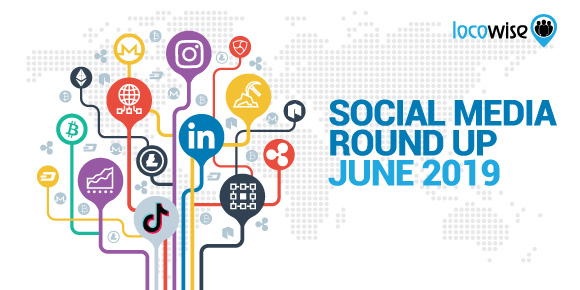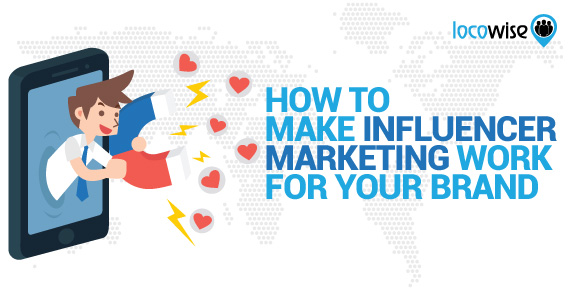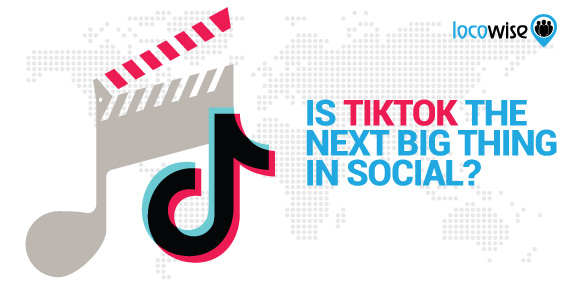Social Media Round Up June 2019
Sahail Ashraf posted on 23 July 2019
It was one of the hottest months on record in some countries, and June had its fair share of news items around the wonderful world of social media marketing.
Nothing necessarily groundbreaking here, just tweaks and new experiences here and there that should make the social media marketer’s job a little easier, or at least a little more fun.

Instagram has long been a home for Influencers, but in June it amped up the value of Influencers quite massively. It announced it is going to allow brands to repurpose Influencer posts as ads. This gives more life to the Influencer campaign, and it also allows for revenue to come in from another source.
However, when you look at the new development, while it may have some key areas of benefit for brands, it can also have a couple of other issues attached that could change the relationship between a brand and an Influencer. Basically, if a brand decides to run a paid ad around Influencer content, the brand will see how the Influencer content plays with a wider audience. The Influencer content goes to the followers of the Influencer primarily, and that’s just how it works. Brands want to influence, so they pay for access to a large follower base. But if the brand decides to use a paid ad, it will be interesting to see how much bigger, ratio-wise, the reach and engagement will be. If it is bigger than the original content, brands may have to ask how viable that Influencer is.
Also, it will allow for much more accountability. Brands will see detailed metrics on a paid ad that has the Influencer attached. It will allow for more fine-tuning of Influencer partnerships as time moves on. This could allow for bigger and more effective campaigns. But one thing may prove problematic. If the wider audience through paid ads doesn’t respond to the Influencer element at all, isn’t it fair to say that the Influencer’s reach is finite and niche?

Tik Tok
You’d be forgiven for wondering why this platform is featured in this post. While TikTok is currently very popular indeed, it has only really been a feature in Western markets recently. This means it is still a relatively new player.
This is exciting because it’s user base has grown massively. It has now been downloaded over a billion times, and it has a user base that is young and has disposable income.
That’s why Tik Tok started talking about retargeting options for the app. These options are essentially segmented audience targeting, so brands can identify a demographic, and market accordingly. It’s early days, but it shows that Tik Tok is a player to be reckoned with. That kind of uptake on an app hasn’t been seen since Snapchat went big.

Mobile killed the TV star
For the first time ever, US audiences are watching their mobile device screens more than they are watching their TV. This insight came from eMarketer, and the source stated:
The average US adult will spend 3hours 43 minutes on mobile devices in 2019, just above the 3,.5 hours spent on TV. Of time spent on mobile, US customers will spend 2.55 (minutes) on smartphones, a 9 minute increase from last year.
eMarketer
This is not entirely surprising, but it shows how dramatic the push from TV to mobile has been. It also sounds a bit of a warning bell to TV companies. Manage this shift with content that works on mobile, or suffer the consequences.
LinkedIn lifts the lid
LinkedIn continued in its massive effort to become a little more accessible outside the sphere of professionals. In June, it basically said that it was moving away from the model of ‘trending content first’ that it has used for what feels like forever, and is now focusing on ranking content that is niche and of interest to people.
To qualify that a little more, the platform wants to find a spot where it can rank conversations about niche topics higher than it does with simple trend topics.
This has been a conscious effort to open up LinkedIn to a wider audience. We think it makes perfect sense, but the senior director of product management at LinkedIn had this to say on a blog post about it:
The more valuable the conversation, the higher in your feed the post will be. How do we know if it’s a valuable conversation? We use the framework People You Know, Talking About Things You Care About.
If that’s the case, LinkedIn has basically pulled a Facebook, in that it has changed the algorithm to make content more relevant to you.
So that was June 2019. We enjoyed it, and we expect that there will be more exciting news to come in July.

If you would like some of the finest and most useful social media marketing metrics around, try Locowise for free for a whole week.






